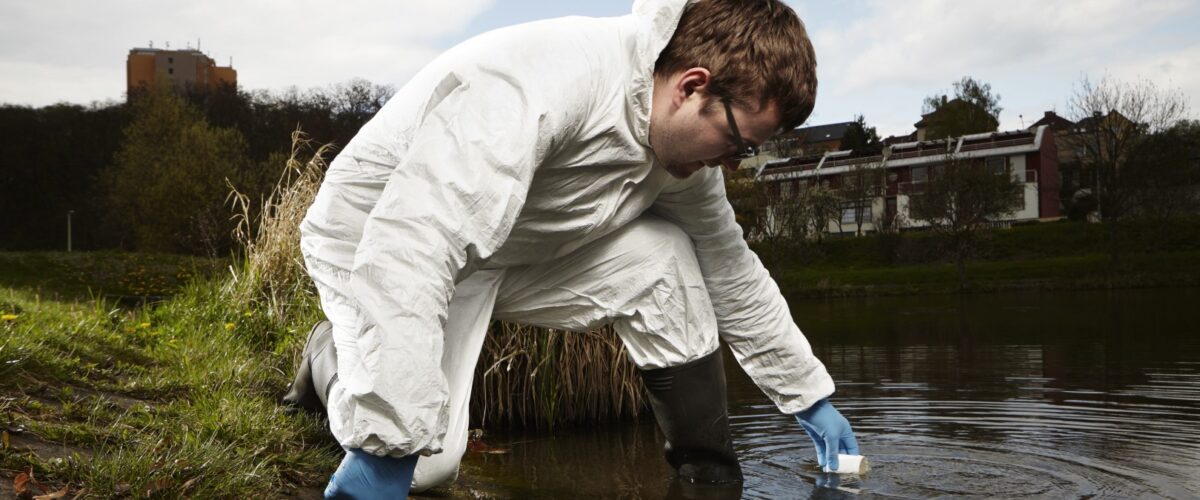- Environmental Protection Agency (EPA)
- State Water Resources Control Board (SWRCB)
- Regional Water Quality Control Boards (RWQCB)
- Local Municipalities
Certain industrial, construction, and municipal facilities in California must conduct stormwater sampling to comply with National Pollutant Discharge Elimination System (NPDES) permit requirements. Samples must be collected at discharge points during the rainy season, generally twice per year. The samples are analyzed for pollutants, pH, TSS, and more. Facilities must upload the lab results to the Stormwater Multiple Application and Report Tracking System (SMARTS) within 30 days of receiving them. Previously, results were only reported on the Annual Report. Meeting these stormwater sampling and reporting requirements can be burdensome for companies. CDMS can provide turnkey stormwater sampling kits containing bottles, chain of custody (COCs), pH strips, a cooler, and instructions customized to your facility’s discharge points. CDMS will track the lab results and load them into SMARTS by the regulatory deadline, ensuring you meet the stormwater sampling requirements with ease. Facilities must conduct storm water sampling at each of the discharge points from the facility (storm drains or other areas where the storm water leaves the property). Samples must be taken twice per rainy season. Samples are analyzed for certain required items as well as any pollutants they may have on site. Sample results are required to be uploaded to Stormwater Multiple Application and Report Tracking System (SMARTS) within 30 days of receiving the lab results. Previously facilities need only report on the Annual Report. CDMS can provide sampling kits to companies to meet storm water sampling requirements. The kits will include sample bottles labeled for each sample point, pH paper, a pre-prepared chain of custody, and instructions for sampling. All materials will be contained in a cooler for shipping to the lab and the sample results will be returned to the companies How often does stormwater sampling need to be conducted? What are facilities looking to test for in stormwater? When does stormwater sampling need to be completed by? How are discharge points/samples determined? Who conducts stormwater sampling? What type of documentation is required? How are stormwater samples shipped to the lab? How long does the lab need to analyze the samples? Where are the lab results reported? Can stormwater samples be mixed or composited? What are common mistakes facilities make with sampling? What are the consequences of improper stormwater sampling? How long must stormwater sampling records be kept? Who enforces stormwater sampling requirements? How much does compliant stormwater sampling typically cost? Can facilities sample less frequently after demonstrating compliance? What triggers a facility being subject to stormwater sampling? Are temporary waste piles or storage subject to stormwater sampling? Does stormwater from vehicle maintenance shops need sampling? Is training required for personnel conducting stormwater sampling? Stormwater Sampling
Regulatory bodies
Who needs it
Regulation reference
What our service provides:

Request a Free EHS Compliance Assessment
Typically twice per rainy season for industrial stormwater permit holders in California.
pH, TSS, O&G, heavy metals, pollutants related to the site’s activities that could contaminate stormwater runoff.
Samples must be taken within the first 4 hours of discharge during qualifying rain events during operating hours.
Samples are taken at locations where stormwater exits the property, such as outfalls, drains, or streams.
Permit holders can use qualified personnel or contract consultants/labs to perform sampling.
Chain of custody (CoCs) forms with sample details, dates, times, signatures, etc.
Samples are packed in coolers with ice packs and sent to the lab via overnight delivery.
Testing is typically completed within 5-10 business days.
To Stormwater Multiple Application and Report Tracking System (SMARTS) and the Annual Report within 30 days of receiving results.
Yes, composite samples from multiple points meeting certain criteria are allowed.
Collecting samples too late after discharge starts, improper labeling, broken custody chain.
Permit violations, fines, required additional sampling events.
At minimum 3 years, but 5 years or more is recommended.
The Regional Water Quality Control Board (RWQCB) issues fines and violations.
From $1,500 to $5,000+ per rainy season with lab analysis.
Potentially, sampling reductions can be requested but are not guaranteed.
Location in an industrial sector, construction activity, stormwater permit requirements.
Yes, runoff from temporary outdoor storage/processing areas usually requires sampling.
Yes, vehicle maintenance areas exposed to precipitation will require sampling.
Yes, annual training is required to ensure proper sampling procedures are followed.



